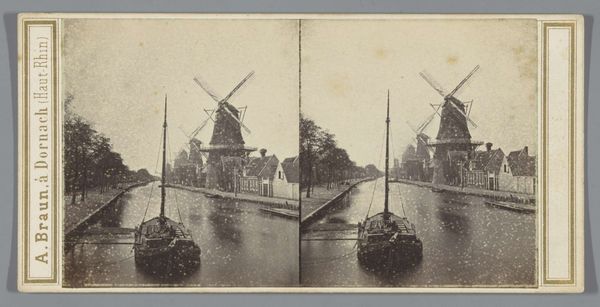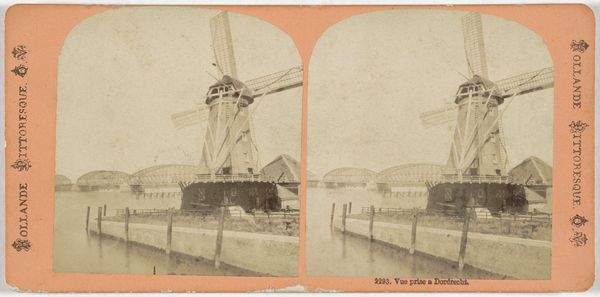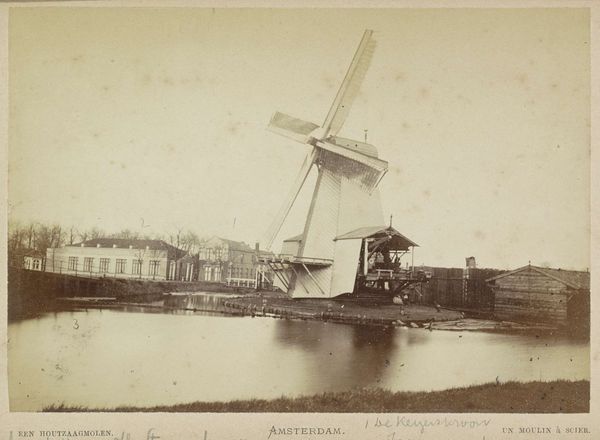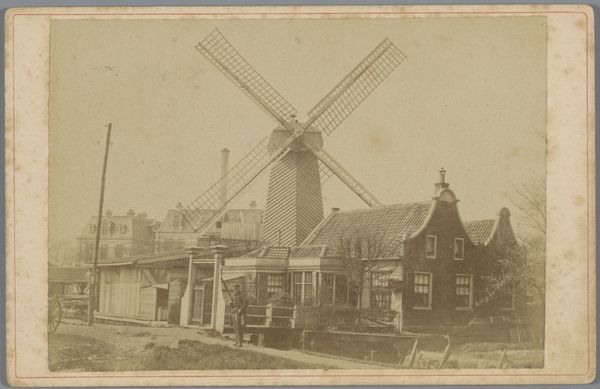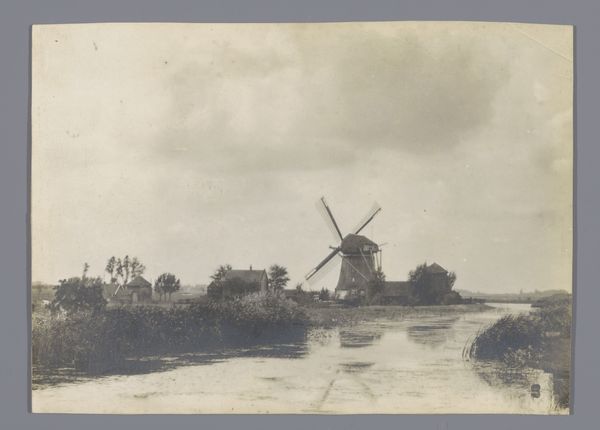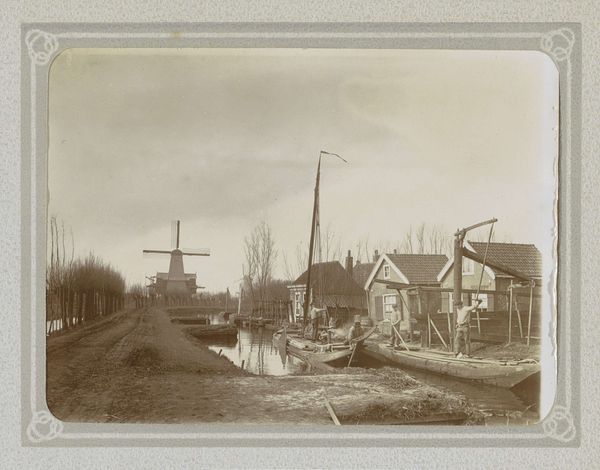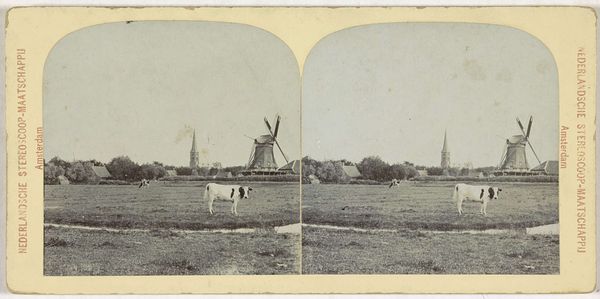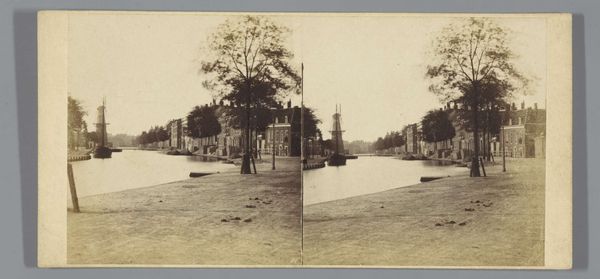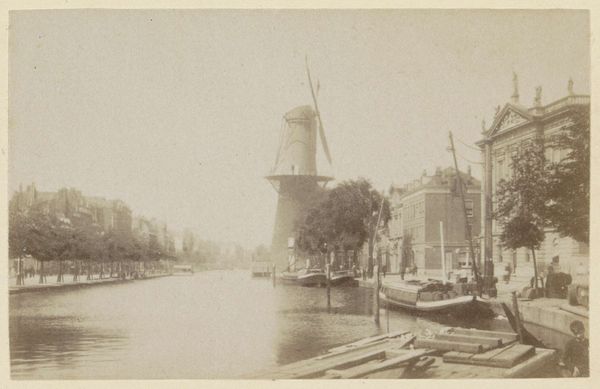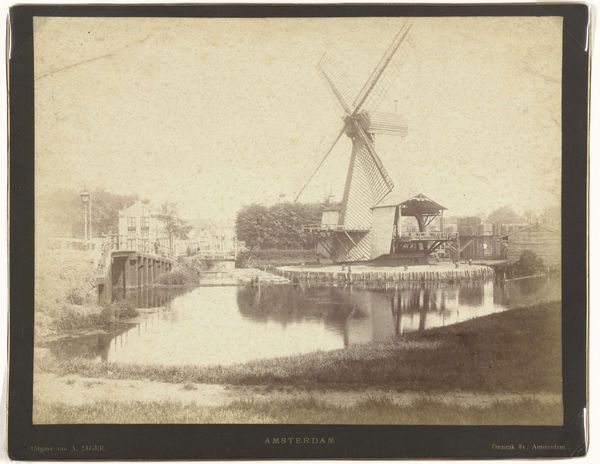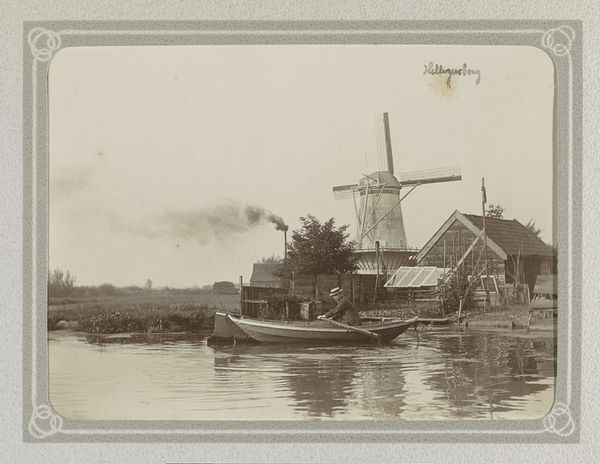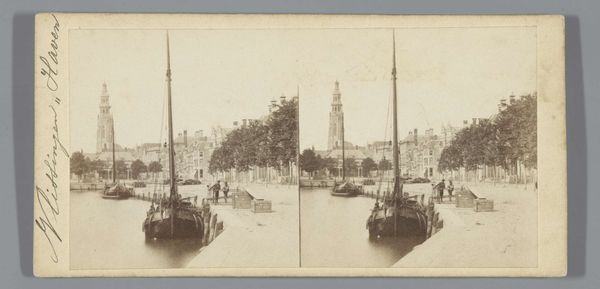
Dimensions: height 87 mm, width 178 mm
Copyright: Rijks Museum: Open Domain
Curator: Looking at this albumen print, titled "Molen de Gooyer aan de Nieuwe Vaart, Amsterdam", dating roughly between 1857 and 1863, I’m struck by the sense of a still, contemplative moment captured in a burgeoning industrial age. What impressions does it evoke for you? Editor: Well, the sepia tones give it an undeniable feeling of nostalgia. But beneath that, I see the strong vertical lines of the windmill, almost asserting its dominance against the horizontal spread of the city and waterway. Curator: Precisely. Windmills held profound symbolic importance during this era, extending far beyond their utilitarian function. They represent ingenuity, harnessing nature's power, but also something distinctly Dutch – a defiance of the landscape, literally creating land. Editor: And consider the vantage point. The photographer positions us not within the idealized center of Amsterdam, but along the canal, closer to working life. You can almost smell the water and industry along the Nieuwe Vaart. Curator: Yes, it hints at the democratization of imagery. The photographic process made it possible to bring scenes of everyday life to a wider audience. Although, even here, we see a touch of romanticism. Note the way the light catches the mill, almost giving it a spiritual quality. Editor: A valid point. Despite photography’s claims of objectivity, the choices in composition, light, and subject matter betray the artist's perspective. And presenting it as a stereoscopic card aimed to grant people the ability to transport to Amsterdam from afar. Curator: This reminds us that photographs are never simply neutral documents. They are constructed narratives, carefully crafted to convey a specific vision of the world. Here, Amsterdam is presented as both progressive and timeless, embracing industry while still cherishing its iconic windmills. Editor: Thinking about the dissemination of such imagery, one cannot avoid the question of how Dutch identity was actively promoted and solidified through photographs that made their way into people's homes and shaped the perception of Holland from both within and without. It becomes clear how deeply entangled art is within history. Curator: Agreed. Visual symbols play an enormous part in our collective consciousness. This albumen print offers a moment of reflection, a way to reconnect with our past and reconsider its symbolic meaning, both consciously and subconsciously. Editor: Absolutely. This single photograph encourages us to reconsider our place within time, reminding us of the shifting tides of industry and identity—the power of the single image, still.
Comments
No comments
Be the first to comment and join the conversation on the ultimate creative platform.
